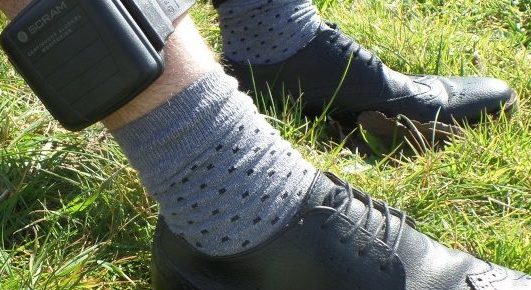At Lextox, we provide a range of options to determine alcohol use, including hair and blood testing and SCRAM Continuous Alcohol Testing. With so many options available, how do you know which one is right for your case?
In this latest blog, we provide you with information on the key differences between SCRAM Continuous Alcohol Testing and hair alcohol testing.
SCRAM Continuous Alcohol Testing
A SCRAM bracelet is fitted to a participant’s ankle and profiles a day by day pattern of alcohol use. An individual’s alcohol consumption is monitored by the bracelet through the level of alcohol excreted transdermally (through the skin) of the donor.
The bracelet provides information regarding alcohol consumption every 30 minutes and could therefore be used to ascertain a detailed pattern of alcohol consumption over a period of time after the bracelet is fitted. Whilst complete abstinence is unable to be confirmed, very low alcohol consumption (for example 1-2 units) can be determined.
The bracelet is fitted with both temperature and infrared sensors which are able to detect when an object has been placed in between the ankle and the sensor, so you will be able to tell if the bracelet has been obstructed or tampered with.
The bracelet can only be fitted by a trained Lextox Sample Collector, who will meet you at your office or a participant’s home to install a SCRAM Base Station and to fit the bracelet to the participant’s ankle. The Lextox Collector will connect the Base Station through a landline, Ethernet (internet connection through the donor’s router) or wireless multiconnect unit. Information is transmitted through the bracelet to the Base Station wirelessly twice a day. If the participant is not in range of the Base Station, the device will still gather information and will transmit readings when they are back in range of the Base Station.
Individuals will typically wear the bracelet for 30, 60 or 90 days as standard. However the length of time can be tailored to suit the case requirements.
We are often asked by clients if the bracelet can detect the difference between consumed alcohol and external environmental factors. The SCRAM bracelet tests the level of alcohol that is excreted through the skin of an individual, when this data is to be reported we will be able to differentiate between alcohol consumption and environmental alcohol. An alcohol reading which peaks suddenly and sharply indicates that an environmental factor has caused the result. This is due to the fact that a ‘normal’ drinking event will show a gradual and curved reading as the alcohol level in the body slowly increases as the drinking event progresses.
Hair Alcohol Testing
Our hair alcohol test detects two types of alcohol biomarkers, the Fatty Acid Ethyl Ester; Ethyl Palmitate (FAEE) and ETG (Ethyl Glucuronide), as standard to help in the assessment of chronic excessive alcohol consumption. This ensures that there is a greater degree of certainty in the analysis results and helps in the mutual confirmation of the results.
A hair alcohol test is useful in the assessment of chronic excessive alcohol consumption. Information on what is classed as chronic excessive alcohol use can be found here.
Hair samples are also collected by a Lextox Sample Collector, which ensures the samples are taken correctly and adhere to strict chain of custody procedures. Sample collection kits can also be sent to a GP surgery for the GP or medical professional to take the hair sample.
In comparison to SCRAM, a hair alcohol test is useful in showing a historic profile of an individual’s alcohol consumption over a period of months. The Society of Hair Testing (SoHT) suggest that alcohol testing should be used in either a 3cm or 6cm hair scalp section covering approximately the past 3 or 6 months respectively. We understand that not every donor will have exactly 3 or 6cm of hair, as such we can analyse samples shorter than 6cm, but do so with caution as recommended by the SoHT.
All results and Expert Reports are legally defensible and accepted in all UK family courts issued in 5 working days on average.
Blood alcohol testing can help in the assessment of chronic excessive alcohol consumption. Lextox currently offer a Liver Function (LF) test and a Carbohydrate Deficient Transferrin (CDT) test. We recommend that a blood test is not used in isolation but should be combined with hair alcohol testing to provide a more comprehensive picture of alcohol use.
To instruct us for a hair alcohol or blood test or SCRAM Continuous Alcohol Testing, contact us today on 029 2048 4141 or email [email protected].
Published 15/03/19 – All information correct at time of publication





